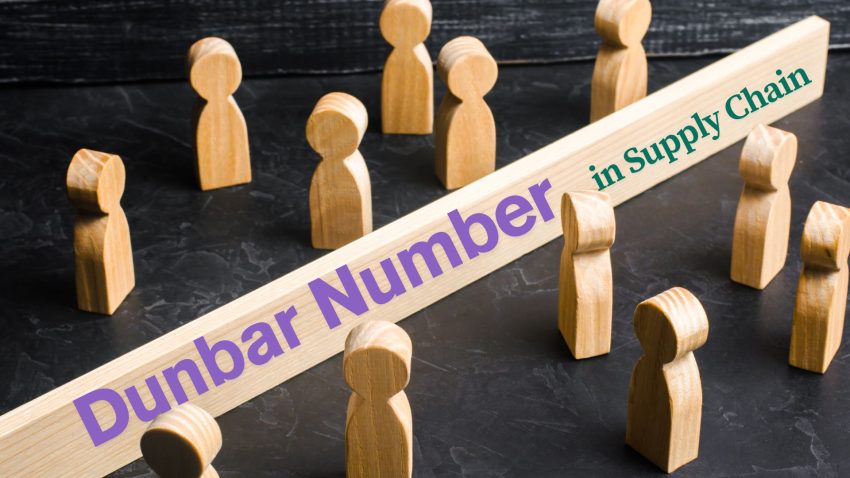In the 1990s, British anthropologist Robin Dunbar proposed a fascinating idea: humans have a cognitive limit to the number of meaningful relationships they can maintain somewhere between 100 and 250, with 150 being the most commonly cited figure. This concept, known as the Dunbar number, suggests that beyond this threshold, our ability to manage stable social connections breaks down.
But what does this mean for supply chain management (SCM), where success depends on vast networks of suppliers, manufacturers, and distributors? Could the Dunbar number dump supply chains that are making large, complex networks unmanageable?
In this blog, we explore whether Dunbar’s limit truly threatens modern supply chains and how agile strategies can keep them running smoothly despite cognitive constraints.
The Dunbar Number: A Supply Chain Bottleneck?
1. The Problem of Scaling Relationships
Traditional supply chains rely on trust, communication, and coordination—all of which become harder as networks grow beyond Dunbar’s limit.
- Information Overload: Can a procurement manager really know 500+ suppliers personally?
- Slower Decision-Making: More stakeholders mean more delays.
- Weaker Trust: Relationships turn transactional rather than collaborative.
2. When Does the Dunbar Number “Dump” SCM?
If companies ignore human cognitive limits, they risk:
- Miscommunication leading to delays.
- Fraud and inefficiency due to weak oversight.
- Supply chain breakdowns from poor coordination.
But does this mean large networks are doomed? Not if they adapt.

How Agile Supply Chains Defy Dunbar’s Limit
Stephen Denning, in The Age of Agile, argues that flexibility, technology, and smart structuring help businesses overcome traditional constraints. The same applies to SCM.
1. Decentralization: Breaking Down the Giant Network
Instead of one massive chain, modular networks split operations into smaller, self managed units that are designed based on Dunbar’s manageable range.
- Example: Toyota’s keiretsu system keeps supplier groups small and tightly integrated.
2. Digital Tools Replace Human Limits
- AI & Predictive Analytics → Automate supplier monitoring.
- Blockchain & Smart Contracts → Ensure trust without personal relationships.
- Cloud Collaboration Platforms → Keep everyone aligned in real time.
3. Dynamic, Adaptive Relationships
Agile supply chains don’t rely on fixed, rigid partnerships. Instead, they:
- Use real time or near time data to switch suppliers as needed.
- Foster short term, high trust collaborations rather than long, unwieldy chains.
Case Study: Who’s Beating the Dunbar Number?
Amazon’s Supply Chain: Too Big to Fail?
With millions of suppliers and partners, Amazon should be a Dunbar disaster. Yet, it thrives by:
✔ AI driven vendor management (reducing human dependency).
✔ Decentralized fulfillment centers (localized decision making).
Zara’s Fast Fashion Agility
Zara keeps production tight with:
✔ Small, responsive supplier clusters.
✔ Real time demand sensing to avoid over reliance on any single partner.

Dunbar’s Number Doesn’t Have to Sink Your Supply Chain
The Dunbar number isn’t a death sentence, it’s a warning. Companies that cling to old school, relationship heavy models will struggle as networks grow. But those that embrace:
✅ Decentralized, agile structures
✅ Digital trust building tools
✅ Dynamic, data driven partnerships
can build massive yet manageable supply chains that defy cognitive limits.
Instead of asking, “Can the Dunbar number dump supply chain management?” we should ask: “Is my supply chain agile enough to survive it?”
Please share your thoughts, how you approach this discussion?

1 thought on “Dunbar Number, Can it Dump Supply Chain Management?”